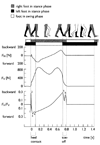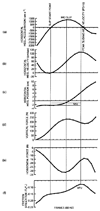Human-centred approaches in slipperiness measurement
- PMID: 11794763
- PMCID: PMC2895265
- DOI: 10.1080/00140130110085556
Human-centred approaches in slipperiness measurement
Abstract
A number of human-centred methodologies--subjective, objective, and combined--are used for slipperiness measurement. They comprise a variety of approaches from biomechanically-oriented experiments to psychophysical tests and subjective evaluations. The objective of this paper is to review some of the research done in the field, including such topics as awareness and perception of slipperiness, postural and balance control, rating scales for balance, adaptation to slippery conditions, measurement of unexpected movements, kinematics of slipping, and protective movements during falling. The role of human factors in slips and falls will be discussed. Strengths and weaknesses of human-centred approaches in relation to mechanical slip test methodologies are considered. Current friction-based criteria and thresholds for walking without slipping are reviewed for a number of work tasks. These include activities such as walking on a level or an inclined surface, running, stopping and jumping, as well as stair ascent and descent, manual exertion (pushing and pulling, load carrying, lifting) and particular concerns of the elderly and mobility disabled persons. Some future directions for slipperiness measurement and research in the field of slips and falls are outlined. Human-centred approaches for slipperiness measurement do have many applications. First, they are utilized to develop research hypotheses and models to predict workplace risks caused by slipping. Second, they are important alternatives to apparatus-based friction measurements and are used to validate such methodologies. Third, they are used as practical tools for evaluating and monitoring slip resistance properties of footwear, anti-skid devices and floor surfaces.
Figures





References
-
- Abeysekera J, Gao C. The identification of factors in the systematic evaluation of slip prevention on icy surfaces. International Journal of Industrial Ergonomics. 2001;28:303–313.
-
- Alexander NB, Shephard N, Mian Ju Gu, Schultz A. Postural control in young and elderly adults when stance is perturbed: Kinematics. Journal of Gerontology. 1992;47:M79–M87. - PubMed
-
- Allum JHJ, Bloem BR, Carpenter MG, Hulliger M, Hadders-Algra M. Proprioceptive control of posture: a review of new concepts. Gait and Posture. 1998;8:214–242. - PubMed
-
- Andres RO, O’Connor D, Eng T. A practical synthesis of biomechanical results to prevent slips and falls in the workplace. In: Kumar S, editor. Advances in Industrial Ergonomics and Safety IV. London: Taylor & Francis; 1992. pp. 1001–1006.
-
- Berg K. Balance and its measure in the elderly: a review. Physiotherapy in Canada. 1989;41:240–245.
Publication types
MeSH terms
Grants and funding
LinkOut - more resources
Full Text Sources
Other Literature Sources
Medical
